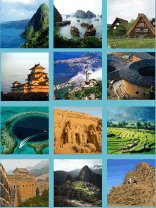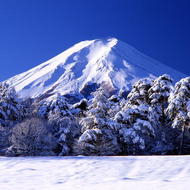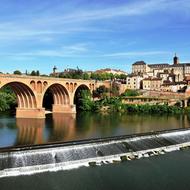Guide 2 – Case Study: Ichkeul National Park (Tunisia)
Baseline situation
Ichkeul National Park is characterized by a very specific hydrological functioning system, based on seasonal alternation of water levels and salinity. The lake and surrounding marshes constitute a stopover for hundreds of thousands of migratory birds, such as ducks, geese, storks, and pink flamingos that winter at Ichkeul.
It was placed on the List of World Heritage in Danger in 1996 due to dams upstream that had cut off nearly all the fresh water flow to the lake and interfered with the natural flora, resulting in a severe decrease in the number of birds stopping in the Park.
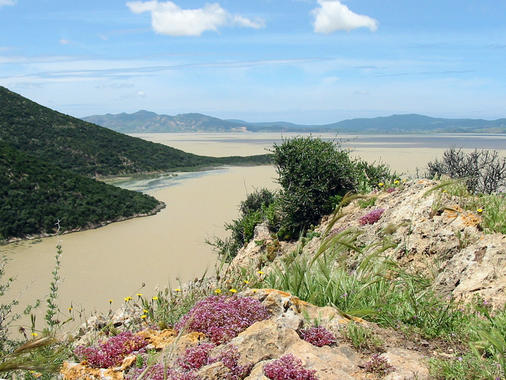
What did they do?
In order to involve stakeholders at all levels, the Ichkeul National Park Management Committee was formed with representatives from local communities, the Ichkeul Agricultural Development Group, government authorities, and various other parties.
Maintaining tourism was deemed fundamental – a UNESCO-funded marketing campaign promoted the Park as a tourist destination, and a new visitor centre was built. Local schemes trained Park guides and raised awareness of the sensitive nature of Ichkeul National Park, and protection measures were implemented around the Park itself, restricting human access while working towards restoring the equilibrium of the wetlands.
Strategic priorities
- Educating local population and tourists about the sensitive nature of the wetland ecosystem.
- Involving local communities in the management of the World Heritage site.
- Eliminating or minimizing other practices and conditions that negatively affect the site, including hunting, grazing, and air pollution.
- Restoring the natural equilibrium of the wetlands, specifically the necessary water levels, salinity, and flora.
- Attracting tourists, and implementing a sustainably strategy that does not negatively affect the eco-system of the Park.
What worked?
After receiving funding from UNESCO’s emergency assistance fund, the Park initiated a marketing campaign and established basic guide-training and credit schemes. This increased the involvement of local businesses and communities in tourism activities, expanded local employment, and enables a greater distribution of the economic benefits from the tourism industry. In order to involve stakeholders at all levels, the Ichkeul National Park Management Committee was formed with representatives from local communities, the Ichkeul Agricultural Development Group, government authorities, and various other parties.
The ‘tourist offer’ was expanded to include nature trails, guided tours, bird-watching, traditional hammams (hot baths), excursions to the douars (tented camps) and local villages, amongst others. Maintaining particular routes has kept visitation pressures low and resulted in raising awareness about conserving the Outstanding Universal Value (OUV) of the site and the importance of using the wetlands in a sustainable manner.
Adaptation measures have been developed and water supply planning now accounts for the consumption of fresh water by the lake and marsh. Freshwater inflow from the dams upstream and exchanges of salted water with the sea downstream is regulated, and a tailored scientific monitoring programme has also been implemented
What was tough?
Funding had to be established before any of the positive changes could be initiated. Furthermore, the active promotion of the National Park as a tourism destination has come about through the cooperation between the Park authorities and tour operators, travel agents, and the Tunisian National Tourist Organization – these relationships had to be developed.
How did they get buy-in?
The value of the site as a tourist destination was recognized, along with the realization that the negative effect of the dam affected the value of the Park and the local community. Regaining and increasing the attention of tourists was recognized as necessary for the future of the site, and the increase in tourism has generated income which, in addition to contributing to to the maintenance of the Park’s infrastructure, feeds into the local economy.
What are the results?
Ichkeul National Park was taken off the Heritage in Danger List in 2006, after being on the List for over ten years. Tourist numbers have doubled (approx. 50,000 per annum), but the impact of increased visitation is kept low as general access to the marshes and the lake is restricted to special circuits with observation towers and look-out points. Approved routes are well-marked, and trained local guides for tourists ensure the protection of the marshes from negative tourism pressures.
Training schemes mean that local residents have the opportunity to enter the tourism sector more easily, making tourism more sustainable in the long term as local knowledge, awareness and involvement has increased. The increase in tourism has generated income, which, in addition to contributing to the maintenance of the Park’s infrastructure – its visitor centre for example – and to conservation management, feeds into the local economy via the wages of a local workforce.
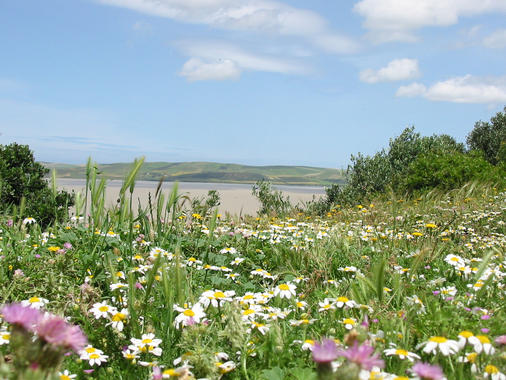
What lessons can others take from this?
The OUV of many World Heritage sites, particularly natural sites, is derived from their unique habitat and the wildlife it attracts. However, these conditions are fragile and require a specific balance of conditions that depend on minimal human impact. This renders their attractiveness as tourist destinations problematic, and in order to maintain the conditions that are valued, the inevitable impact of any human visitation must be kept to the minimum.
The Ichkeul National Park was on the Danger List for ten years before being removed in 2006. Positive change does not happen over night! But Ichkeul National Park shows that with hard work, a clear vision, and the inclusion of the local community, positive change can be implemented with even the most delicate of sites visited sustainably by tens of thousands of tourists.
For more details regarding collaboration and implementation of Ichkeul's strategy, see the decision document from the 27th World Heritage Committee session here (pg. 11).

